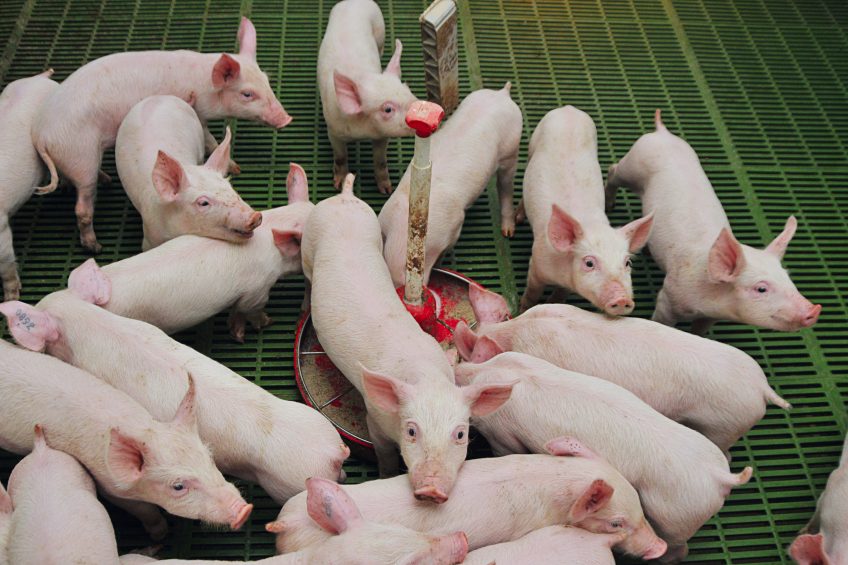Nutritional strategies to reduce antibiotic use

High quality nutrition and a well-managed environment can play a critical role in reducing the need for antibiotics. Low crude protein diets and high quality ingredients for young animals are recommended so as not to compromise performance. This holistic view of animal production is needed for the future.
Antibiotics are no longer required to ensure efficiency or performance. Overall use of antimicrobials in Danish livestock production has been reduced by about 50% between 1994 and 2015, mainly by discontinued use of antimicrobials as growth promotors in 1998 (8 years before the EU ban in 2006). Prophylactic use has also been further reduced following the 2011 yellow card system which focuses on benchmarking across farms. The production of pigs increased in the same time period which is mainly a result of higher efficiency as measured by piglets per sow per year (PSY). There is no doubt that the enhanced number of PSY has also led to a decreased weight at weaning which plays an important role in the way in which newly weaned piglets must be fed.
We are all aware of the acute stress that weaning brings not only to nutritional parameters (intake depression, changes to diet) but also to health (new litter mates, environment). It is therefore paramount that the diet pre and post weaning is the best quality possible. Feeding a high quality creep and weaning diet can help reduce the effect of some of these factors. Dietary ingredients therefore, need to be of a consistent high quality (nutrient content and availability), palatable and cost effective.
Microflora is key
The gut of the young animal is inoculated with bacteria from the environment through the mother, pen and feed. This must be balanced and without pathogens and so the mothers’ nutrition is also important. A good gut can help buffer environmental, management and nutritional stresses, which help the animal stay healthy.
A diverse microflora can provide benefits such as competitive exclusion and natural disease ‘resistance’, but there is a ‘cost’ associated with this. Sustaining a balanced and diverse ecosystem in the gut will require sacrifice of a proportion of the nutrients fed to the animal. This would mean there is ultimately slightly less energy and amino acids available for animal growth. There will also be low grade inflammation associated with the microflora presence which impacts nutrient digestibility further and brings a protein and energy cost in the production of mucus. This must be acknowledged in animal feeding and diets should be balanced accordingly.
The process of weaning creates a stress point on the immature gut and can impact the microflora therefore initial intakes are important. AlphaSoy 530 is a processed soya of consistent high quality, produced using a combination of enzyme and physical manufacturing technology, which provides a palatable high protein feed material for young, developing animals. Many trials show how the product improves the performance of piglets when replacing other soy sources without antibiotics in the feed. This production process also reduces anti-nutritional factors (ANF’s) to a safe level. These qualities are beneficial in the diets of young pigs where the immune system can be compromised.
Protein and energy digestibility is impaired
Protein digestion is critical at this time. Feeding ingredients low in crude protein content but with high digestibility of amino acids (AA) has been shown reduce protein fermentation in the lower gastrointestinal tract. This then reduces the proliferation of putrefactive bacteria and therefore minimises loss of nutrients and production of undesirable metabolites. Providing a diet well balanced in amino acids (to requirement) is of critical importance (see Figure 1). AlphaSoy 530, produced by Danish animal feed business, Agrokorn, has been researched and developed over 10 years and has been shown in numerous European trials to perform well in the absence of antibiotics or zinc. The product is beneficially balanced especially in those AA’s not commercially available such as Iso-leucine, leucine and tyrosine. This can also help with balancing other dietary ingredients. The aim therefore should be to have no excess protein in terminal ileum to reduce proliferation of pathogenic bacteria. This will help reduce post-weaning diarrhoea without relying on the addition of zinc oxide to help manage this.
Figure 1 – Digestible amino acid balance compared to Ideal (Ajinomoto 2016) and commercial fishmeal.

Young animals also have an impaired ability to digest fat, especially additional vegetable fat/tallow, which can be relatively high in piglet starter diets (>3%). This is related to the volume of bile salts and endogenous enzymes that are produced. Microflora can impede this further, leading to disruption in emulsification by the production of bile salt hydrolases (BSH), the use of antibiotics have been shown to reduce the population of gram negative bacteria which helps to reduce the production of BSH. Utilising ingredients with high energy digestibility, such as the product mentioned, which has a 10% increased DE over conventional soya, can therefore help to reduce the need for additional fats and reduce pressure on diet emulsification.
The product also has a lower proportion of indigestible fraction at the terminal ileum (UTSi) (Figure 2) which provides a guide to the proportion of material which is undigested by the animal and is predicted using an in vitro method developed by the Danish Agricultural Research Institute. The low values for the product supports the improved energy digestibility shown in vivo and improved performance seen in multiple piglet trials as there is potentially less material for bacteria to feed on and thus a reduction in BSH produced.
Figure 2 – Ingestible fraction compare for various soy proteins.

Utilising high quality proteins as part of the diet can help to reduce the reliance on antibiotics and zinc oxide. Diets need to be formulated with a holistic view, not only for performance, but overall health. AlphaSoy 530 offers a source of great quality soy protein which is highly suited for young animal diets where digestion and health can be under pressure.
References available on request












